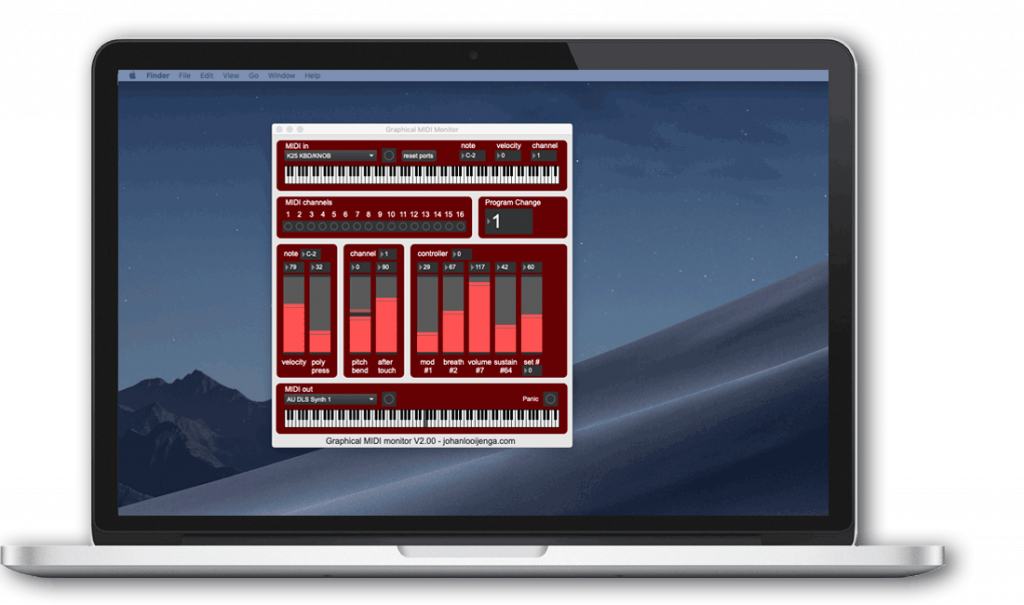

Let your ears be the judge and don’t get too led astray by your visual biases.Ībleton’s Max for Live Essentials bundle for Live Suite is a recommended starting point for sequencers, modulators and workflow customisation. However, our advice is to always audition these.

Some of the devices, much like Live’s native equivalents, may fool you with their minimal design. FEATURES: Variable step lenght (1-32) Step Shifting 2 play modes ( Forward & Rever. Monarp is a versatile Max for Live device for sequencing notes which syncs to Ableton Live's transport.
#M4L MIDI MONITOR FREE#
This list will give you an idea of what’s available in the vast world of Max for Live devices, ranging from Ableton’s own collection to free third-party and purchased options. DIFF Devices - MONARP 1.0 by DiffDevices. At its core, it runs like other Live devices but can be used to excitingly expand the capabilities of your Ableton Live set-up. Owners of Live Suite will already have it, and Live Standard users can purchase it as an add-on. (This allowed Bach to write his name in the Art of Fugue.) And of course when different tuning systems are used, different names are applied.Max for Live is a powerful extension framework to the native plug-ins available in Ableton Live. The notation used here is not universal: in German speaking countries, H is used instead of B, and B is used for Bb. m for the note A4 is 69 and increases by one for each equal tempered semitone, so this gives us a simple conversion between frequencies and MIDI numbers (again using 440 Hz as the pitch of A4): In electronic music, pitch is often given by MIDI number: let's call it m for our purposes. Similar equations give n o, the number of octaves from A4, and n c, the number of cents from A4: For a note that lies n semitones higher (or −n semitones lower), the frequency is thenĬonversely, one can obtain n, the number of semitones from A4, from This is usually A4, which is often set at 440 Hz. First, one needs a reference note and frequency. In equal temperament, where all semitones have the same frequency ratio of 2 1/12, conversion between note name and frequency is simple. Now to divide the octave into smaller units. An octave is a ratio of 2:1, so the number of octaves between f 2 and f 1 is
#M4L MIDI MONITOR HOW TO#
How to do the calculation? Suppose that two notes have frequenciesį 1 and f 2, and a frequency ratio of f 2/f 1.


To note converter written by Andrew Botros. Controller CC on ch4 -> Ableton Live midi ports (ch4) -> midi track input (ch4) -> internal transformation to ch1 -> any plug ins, m4l patches inside the midi track are receiving now midi messages on ch1 (even though its input may have been set to receive on ch4) I dont know if the above clarify the issue - make it clear for you. to the nearest note and how far it is out of tune, go to the frequency This table is reproduced below but inverted, i.e. to the nearest note and how far it is out of tune), go These data were used to calculate the first table below, which gives the frequency of any standard keyboard note By convention, A4 is often set at 440 Hz. Each semitone therefore has a ratio of 2 1/12 (approximately 1.059). See Frequency and Pitch for more details and an introduction to frequency and pitch.Īn octave is a ratio of 2:1 and, in equal temperament, an octave comprises 12 equal semitones. The musical interval between two notes depends on the ratio of their frequencies. Note names, MIDI numbers and frequencies are related here in tables and via an application that converts them.


 0 kommentar(er)
0 kommentar(er)
